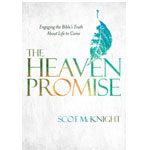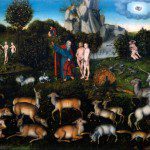 I recently received a copy of a new book Death Before the Fall: Biblical Literalism and the Problem of Animal Suffering by Ronald Osborn courtesy of the publisher (IVP). This is not your typical coffee table book, although the imagery with which Osborn starts, Mana Pools in Zimbabwe, would fit right in … aside that is from the lions feasting on a fresh killed Cape buffalo.
I recently received a copy of a new book Death Before the Fall: Biblical Literalism and the Problem of Animal Suffering by Ronald Osborn courtesy of the publisher (IVP). This is not your typical coffee table book, although the imagery with which Osborn starts, Mana Pools in Zimbabwe, would fit right in … aside that is from the lions feasting on a fresh killed Cape buffalo.
Three young females had taken down a Cape buffalo, which they had not yet dragged into the cover of the bush. Its legs were splayed at odd angles and its side was opened, exposing an impressive rib cage in shades of white and crimson. The lions were feasting on the carcass in the middle of the road, panting heavily as they tore into its body, their chests and muzzles soaked in blood. … At last we continued on our way, dipping into the sandy shoulder of the track we navigated about this scene of beautiful carnage. The lions paid us little notice. (p. 12)
A picture of Mana Pools taken from the article in Wikipedia is below, no lions, but a couple of elephants are seen.
Ronald Osborn was raised to believe in a young earth, with creation in six 24 hour days. In the original creation there was no mortality and no predation. The attraction the lions have for a young Cape buffalo is a consequence of human rebellion in the sin of Adam and Eve. This sin produced not just death, but also a myriad of anatomical changes in the animals populating the garden and the world.
The idea that the lions in Eden were docile vegetarians with dagger-sharp claws originally designed by God for tearing the bark off trees appeared downright silly. Somehow those massive canine teeth and retractable claws for taking down living prey had got there. This seemingly left one possibility: God himself was responsible for the transformation of all nature in what amounted to a hostile second creation after Adam and Eve’s fall. All mortality and all predation in the animal kingdom were the result of a divine punishment or “curse.” (p. 16)
 Osborn has a way with words, this book could be interesting. The topic certainly is. The earth isn’t young – ice cores, lake varves among other things demonstrate this whatever one might think of radiometric dating and evolutionary mechanisms for speciation. Nor were animals all originally docile cuddly kittens, lambs, and bunnies. Lions, hawks, scorpions, tyrannosaurus, and even parasitic wasps – or the like – were part of God’s good creation before humans were in the picture.
Osborn has a way with words, this book could be interesting. The topic certainly is. The earth isn’t young – ice cores, lake varves among other things demonstrate this whatever one might think of radiometric dating and evolutionary mechanisms for speciation. Nor were animals all originally docile cuddly kittens, lambs, and bunnies. Lions, hawks, scorpions, tyrannosaurus, and even parasitic wasps – or the like – were part of God’s good creation before humans were in the picture.
Creation in Genesis. In his book Osborn first lays the ground work for the more significant discussion of animal suffering through what he sees as the difficulties with Biblical literalism. This begins with the creation narratives in Genesis. Raised with a view of young earth creationism as a Seventh Day Adventist Osborn knows the arguments made in favor of such a reading of the text, and also their weaknesses. He has read widely and brings insights from Dietrich Bonhoeffer, Karl Barth, John Stott, John Walton, Alister McGrath, and Walter Bruggeman among others into his discussion of the text. (John Walton wrote the forward to this book.)
Osborn makes several specific points regarding the creation narratives:
Creation occurs both ex nihilo and from existing material. In Genesis 1:11 the command is let the land bring forth vegetation, and Adam and the animals in Genesis 2 are formed from the ground, from the dust or clay.
In Genesis 1 mankind (male and female) is given the charge to subdue the land. The term in Hebrew is the language of military struggle. This isn’t simply tending a country garden.
The creation is described as good and very good, but nowhere is it described as perfect. The words used do not convey an image of divine perfection other places in the Old Testament text.
In fact, Mark Whorton writes, nowhere else in Hebrew Scripture is tob or tob me’od interpreted by biblical scholars “as absolute perfection other than Genesis 1:31, and in that case it is for sentimental rather than exegetical reasons.” There are other words in biblical Hebrew that are closer to the English sense of “perfect” than tob me’od that might have been used instead. (p. 29)
In order for the warning “you shall surely die” to have meaning, Adam and Eve must have known what death was. Otherwise the threat is meaningless.
He follows the path taken by John Walton that Genesis conveys theological meanings in “the prescientific worldview of the original hearers rather than our modern one.” This theological vision is crucial and it does provide constraints for how we should think about creation, but it remains a prescientific presentation. We shouldn’t read science into or out of the text.
Genesis tells us that humans are intimately related to this world and to other creatures, but that we are qualitatively related to God in a unique way that includes dimensions of moral awareness, reasoning and responsibility that cannot be grasped in reductive or purely materialistic terms. It tells us that creation has been marred or distorted as a result of human rebellion. And it reveals that we are now alienated from each other and from God as a consequence of our fallen natures. (p. 38)
Much of the discussion in this first chapter on Genesis covers ground that has been covered in my posts many times over the last several years, although Osborn brings new insights as well. Over a series of posts we will dig deeper into the book and into the theological problem of animal suffering and death before the fall.
What are the most significant questions raised by death before the fall?
If you wish to contact me directly you may do so at rjs4mail[at]att.net
If interested you can subscribe to a full text feed of my posts at Musings on Science and Theology.











